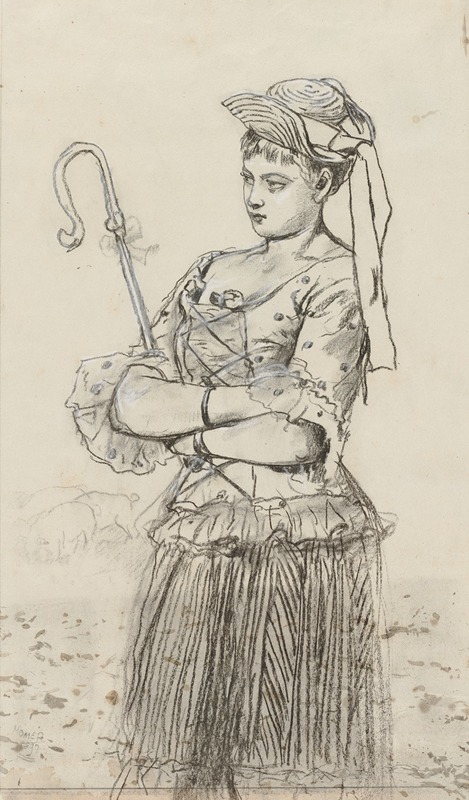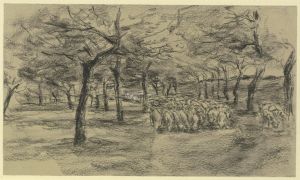
Shepherdess
A hand-painted replica of Winslow Homer’s masterpiece Shepherdess, meticulously crafted by professional artists to capture the true essence of the original. Each piece is created with museum-quality canvas and rare mineral pigments, carefully painted by experienced artists with delicate brushstrokes and rich, layered colors to perfectly recreate the texture of the original artwork. Unlike machine-printed reproductions, this hand-painted version brings the painting to life, infused with the artist’s emotions and skill in every stroke. Whether for personal collection or home decoration, it instantly elevates the artistic atmosphere of any space.
"Shepherdess" is a painting by the American artist Winslow Homer, created in 1878. Winslow Homer (1836–1910) is renowned for his landscape and marine subjects, and he is considered one of the foremost painters in 19th-century American art. His work is characterized by its realistic and often dramatic portrayal of American life and nature.
"Shepherdess" depicts a young woman tending to her flock of sheep in a serene and pastoral setting. The painting captures the simplicity and tranquility of rural life, a theme that Homer explored in several of his works. The shepherdess is shown standing in a field, holding a staff, with her sheep grazing peacefully around her. The composition is balanced and harmonious, with a focus on the natural beauty of the landscape.
Homer's use of light and color in "Shepherdess" is particularly noteworthy. The painting features a soft, diffused light that enhances the peaceful mood of the scene. The colors are muted and natural, with greens, browns, and blues dominating the palette. This subtle use of color and light helps to create a sense of depth and realism in the painting.
The painting reflects Homer's interest in the theme of pastoral life, which he explored during his time in England from 1881 to 1882. Although "Shepherdess" was created before this period, it anticipates the themes and techniques that would become prominent in his later work. During his stay in the English village of Cullercoats, Homer was inspired by the local fishermen and rural scenes, which influenced his subsequent paintings.
"Shepherdess" is part of the collection of the Museum of Fine Arts in Boston, Massachusetts. The museum acquired the painting in 1917, and it has since been an important part of their American art collection. The painting is appreciated for its technical skill, its depiction of rural life, and its place within Homer's broader body of work.
Homer's work, including "Shepherdess," is celebrated for its contribution to American art. His ability to capture the essence of the American experience, whether through scenes of rural life, the sea, or the wilderness, has earned him a lasting legacy. "Shepherdess" exemplifies his skill in portraying the quiet dignity and beauty of everyday life.
In summary, "Shepherdess" by Winslow Homer is a significant work that showcases the artist's talent for capturing the tranquility of rural life through his masterful use of light, color, and composition. The painting remains an important piece within the Museum of Fine Arts, Boston, and continues to be admired for its artistic and historical value.


















